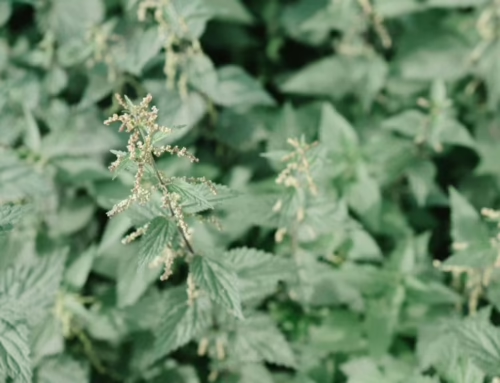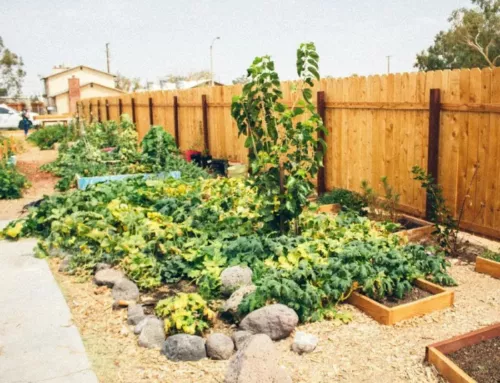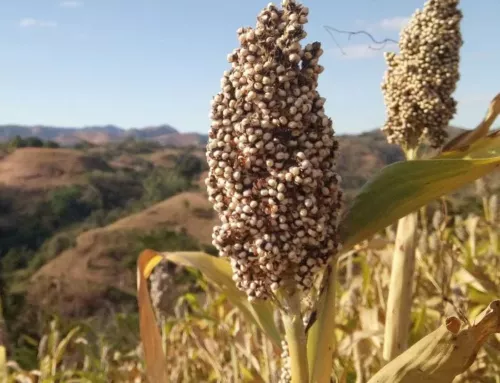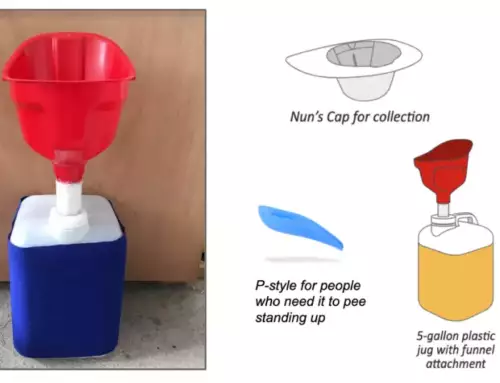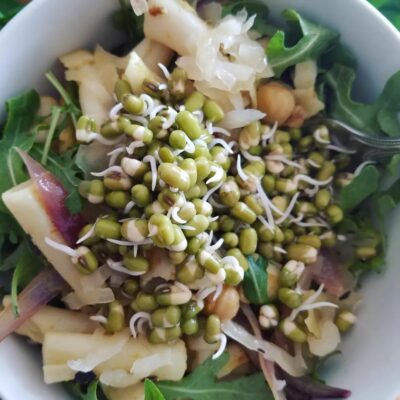
Rice pasta with caramelized onions, chickpeas, curry, cultured vegetables, sprouted mung beans, served on a bed of arugula. Photo credit: Priscila Espinosa.
by Priscila Espinosa @mysproutchange
Why I Love Sprouted Mung Beans
I love sprouted mung beans! Mung bean sprouts are at the top of my healthy foods list because they are super easy to sprout, very nutritious, and because I can also sprout mung beans year round, especially in the wintertime when it is more difficult to source a variety of fresh vegetables. Within 1.5 days, the mung bean sprouts are ready to eat. To give you an example, I recently started soaking mung beans on a Friday night and by Sunday morning I had already enjoyed 3 meals with my new sprouted mung beans!
I love incorporating sprouted seeds, legumes, and grains into my everyday meals as they are wonderful DIY (Do It Yourself) superfoods full of vitamins and minerals! I do find that when my time is the most limited and I need a quick and easy superfood to support my resilience, immunity, stress level reduction and overall health, that my surefire go-to superfood is DIY sprouted mung beans.
Mung bean sprouts promote healthy aging thanks to their anti-inflammatory, anti-microbial, anti-fungal, and anti-cancer properties as well as by helping detoxify the body.
Additionally, mung bean sprouts promote longevity and optimal health due to these health benefits:
- vitamin K for our bone health;
- vitamin C and zinc for our immune system health;
- fiber for our gut and colon health;
- proteins for our muscle, bone, and hormone health;
- potassium and peptides for our heart health,
- magnesium for our overall health including our muscle, nervous system, and healthy blood sugar;
- as well as B-complex vitamins to support our mental and nervous system health.
Want to learn more? Register for my upcoming workshops at www.mysproutchange.com/links
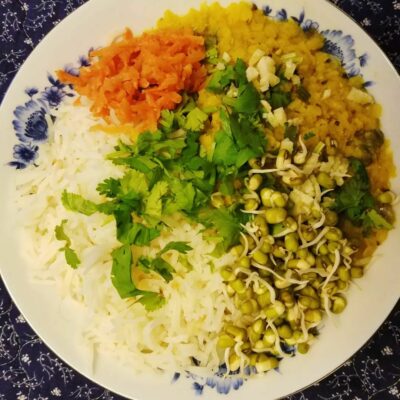
Basmati rice, Indian-style red lentils (curry, ginger, cumin, coriander, etc), sprouted mung beans, cultured carrots, chopped cilantro, and chopped raw garlic (helps reduce high blood pressure from anxiety). Photo credit: Priscila Espinosa.
SproutChange’s Simple Steps to Sprout Mung Beans
- In a quart sized mason jar, I used about 1/2 cup of mung beans (possibly a little less).
- Soak for several hours or overnight in dry, away from direct sunlight, area (I like to cover mine with cloth).
- Drain soaking water (TIP: water your houseplants with this water!).
- Rinse beans with fresh water at least 2 times within a 24 hour period, (eg between 8am-8am), I would rinse in the morning and early evening. Best if rinsed and drained 3-4x per 24 hours, (eg morning, afternoon, and evening).
- Drain.
- Allow beans to finish draining at a 45-degree angle while the sprouts continue to grow (I like to cover mine with a well-fitted black cloth).
- Rinse beans with fresh water at least 2 times within a 24 hour period, (eg between 8am-8am), I would rinse in the morning and early evening. Best if rinsed and drained 3-4x per 24 hours, (eg morning, afternoon, and evening).
- Drain.
- Allow beans to finish draining at a 45-degree angle while the sprouts continue to grow (I like to cover mine with a well-fitted black cloth).
- Once you have reached sufficient growth, AND your sprouts are sufficiently dry from draining, switch from a sprouting lid to a closed airtight lid, and store the sprouts in the fridge. Ensure your sprouts are dry enough as excess moisture leads to mold.
- Enjoy your sprouts as a topping on your meals and salads, or as a snack!
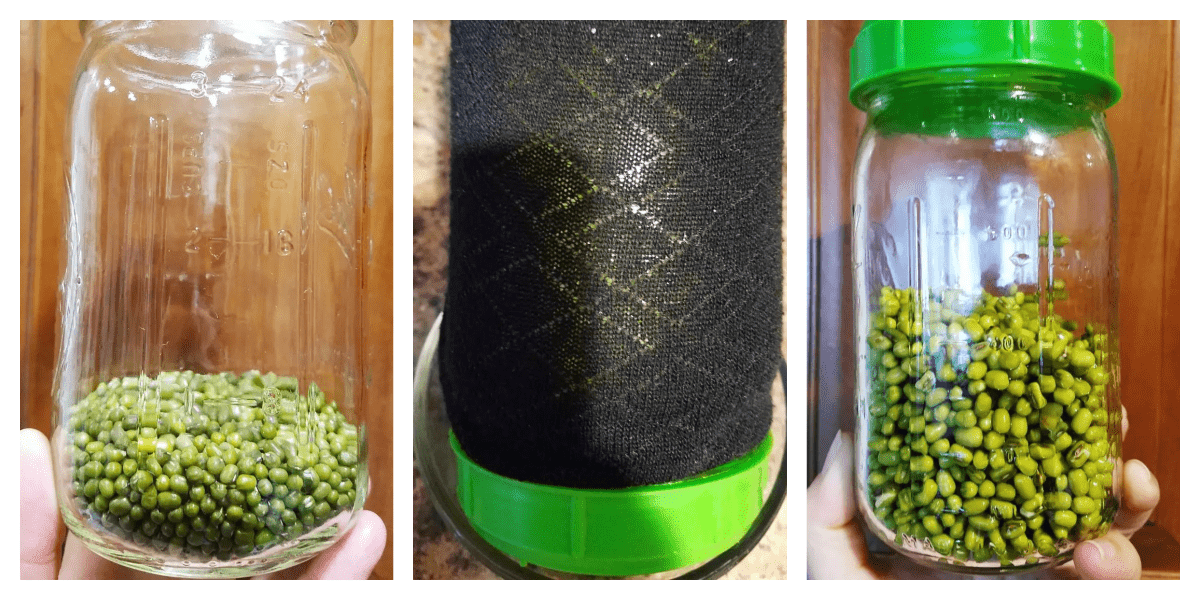
Left to right: dry mung beans measured into a jar, moistened mung beans soaking in a jar covered with a black cloth, mung beans starting to sprout. Photo credit: Priscila Espinosa.
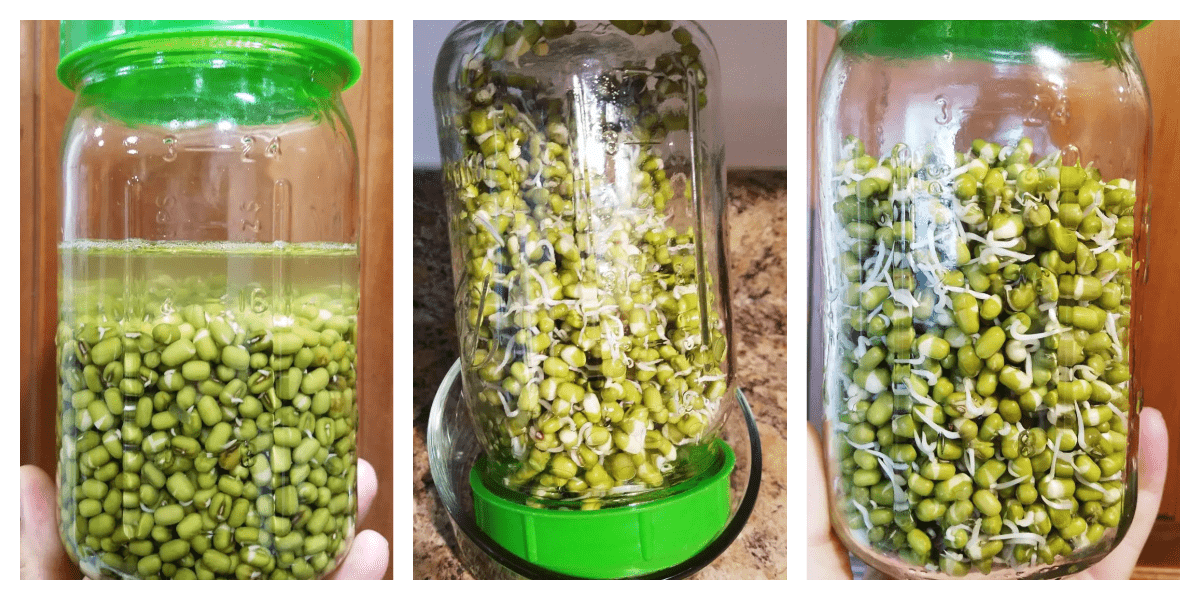
Left to right: Mung beans being rinsed after beginning to sprout, mung beans draining thoroughly after sprouting, finished sprouted mung beans ready for eating and refrigeration. Photo credit: Priscila Espinosa.
RESOURCES
Sprouting Jars: Ball Canning @ballcanning
https://www.ncbi.nlm.nih.gov/pmc/articles/PMC6627095/
https://www.ncbi.nlm.nih.gov/pmc/articles/PMC3899625/
https://www.nutrition-and-you.com/mung-bean-sprouts.html
https://fdc.nal.usda.gov/fdc-app.html#/food-details/169957/nutrients
©2022 by @mysproutchange. All rights reserved. Please contact Priscila Espinosa at [email protected] to obtain copyright permission before republishing “Simple Steps to Sprout Mung Beans” on a website, blog, newsletter, social media site, or another copy medium.
SPROUTCHANGE’S PROGRAMS ARE NOT A SUBSTITUTE FOR PROFESSIONAL MEDICAL ADVICE. The information provided by SproutChange and/or its Coach or consultants, whether in media outlets, while campaigning, at workshops, during one-on-one consultations or otherwise is for general educational purposes only, and is not intended to provide professional medical advice and should not be relied upon as a substitute for professional medical advice, diagnosis, or treatment. SproutChange’s Coach and consultants are not medical professionals. Clients and attendees of any of SproutChange’s programs or recipients of materials are advised to consult a medical professional or healthcare provider if they are seeking medical advice, diagnoses, or treatment or suffering from conditions requiring medical attention, or who have symptoms that concern them. Clients should not alter or cease their current professional medical care or treatment or medication or make any lifestyle and dietary changes or take or alter potential dietary supplements for any reason without consulting a medical professional.

